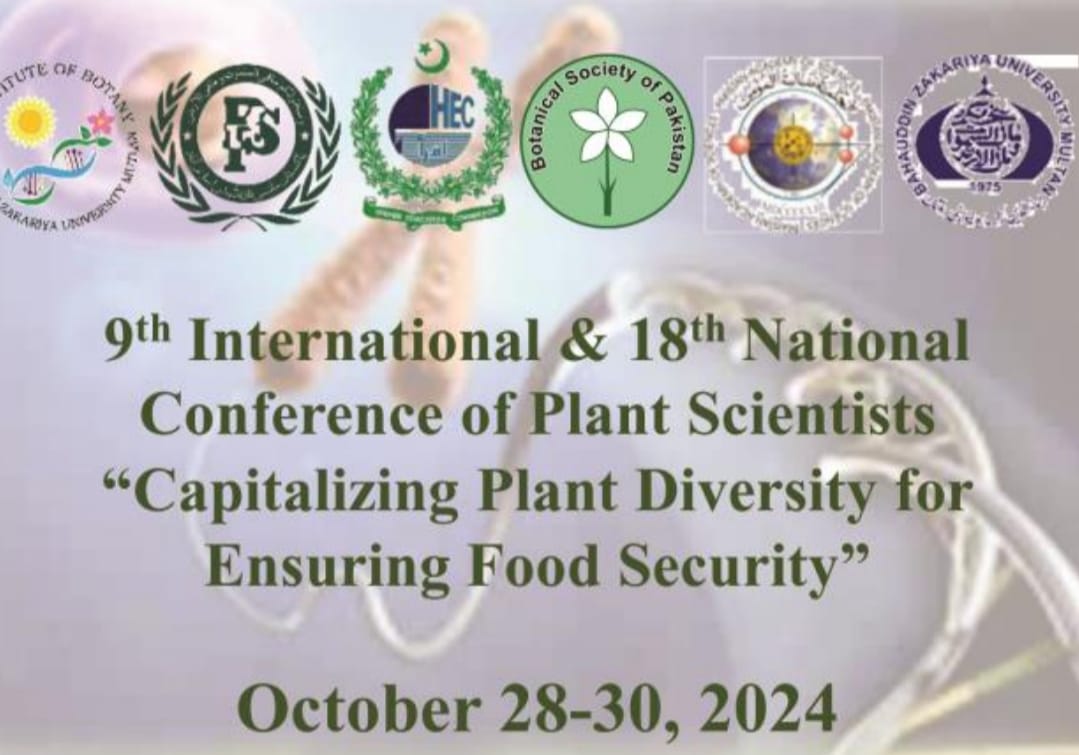
PJB-2023-513
Organic amendments enhance soil micronutrient dynamics and transformations by improving the residual effect on wheat crop
Abid Kamal, Ishaq Ahmad Mian, Khadim Dawar, Gadah Albasher, Shoucheng Huang and Mohammad Javed Ansari
Abstract
Optimal nutrient balance is crucial for boosting crop yield and biomass. Unnecessary use of mineral nutrients can lead to soil mining, deteriorating productivity, and soil health. Replenishing indigenous soil nutrients by adding organic amendments and inorganic fertilizer application may enhance soil health and crop productivity. This study investigates the effects of long-term integrated use of organic and inorganic fertilizers on soil nutrient status and crop growth and development. Field trails were conducted for two consecutive years (2018 and 2019) at the research farm of the University of Agriculture Peshawar-Pakistan. The experiments were conducted using two factorials randomizing complete block design with three replications. Treatments were used, Half (H) NPK, Full NPK, Legume Residues (LR) @ 10 tons ha-1, Humic Acid (HA) @ 5 kg ha-1, Biochar (BC) @ 10 tons ha-1, LR + HNPK, HA + HNPK, BC + HNPK, HLR +HHA+ HNPK, HLR + HBC + HNPK, HBC + HHA + HNPK and one control for comparison to investigate its impact on maize growth and yield and its residual effect on soil health and subsequent wheat crop Experiential findings revealed that maximum soil micronutrients Zn (0.10 mg/kg), Mn (2.5 mg/kg), Fe (6.9 mg/kg) concentration in soil and Cu (0.009 %), Mn (0.023 %), Fe (0.041 %) concentration in plants were recorded in HBC + HHA + HNPK treatment. As compared to control, significant highest Zn (0.064 %) contents in grain were recorded in plots where only BC + HNPK was applied. The highest Cu (0.020 mg/kg) concentration in soil was recorded in BC, Ha, HA + HNPK, while high Cu (0.030 %), Mn (0.023 %), Fe (0.040 %) concentration in grain were recorded with HLR + HBC + HNPK, whereas Zn (0.030 %) concentration in plants were recorded with HLR + HBC + HNPK treatment. Overall, the soil fertility of micronutrients was better in the 2nd year as compared to the 1st year. Thus, the application of both inorganic and organic amendments together provides a sustainable and economical method of maintaining soil fertility. Conclusively the results of the study indicated that soil fertility and crop yield and biomass under Maize-wheat cropping system may be increased more effectively by applying organic amendments and inorganic fertilizers together than by applying either organic or inorganic fertilizers alone
To Cite this article: Kamal, A., I.A. Mian, K. Dawar, G. Albasher, S. Huang and M.J. Ansari. 2025. Organic amendments enhance soil micronutrient dynamics and transformations, by improving the residual effect on wheat crop. Pak. J. Bot., 57(4): DOI: http://dx.doi.org/10.30848/PJB2025-4(28)
Download PDF


